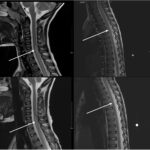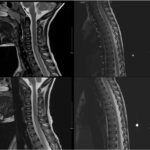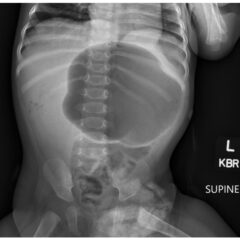Beware of the Pediatric Limp: A Case of Mycoplasma Associated Acute Transverse Myelitis
ABSTRACT:
Gait disturbances in pediatric patients can be wrought with diagnostic pitfalls given the broad infectious, traumatic, musculoskeletal, and neurological etiologies. Furthermore, children can have difficulty communicating their pain and can be hard to examine. This case highlights the importance of slowing down to obtain a detailed history as well as perform a thorough exam in our pediatric patients, which can be challenging in a busy emergency department. We present a case of acute transverse myelitis (ATM) in a four-year-old male who presented with a one-day history of limp and bilateral leg pain with weight bearing. The caretakers reported a possible remote trauma from roughhousing at daycare. Neurological examination revealed significant abnormalities including bilateral patellar hyperreflexia, bilateral lower extremity weakness, clonus, and gait ataxia. A brain and spinal MRI revealed longitudinally extensive ATM with cord edema. Despite the lack of any evidence of infectious prodrome, cerebrospinal infectious analysis revealed Mycoplasma pneumonia as the causative agent. Treatment with intravenous (IV) methylprednisolone and azithromycin therapy led to eventual resolution of all neurological sequelae within a few weeks of discharge. This report emphasizes the importance of considering ATM in the differential of pediatric patients presenting with gait complaints, as well as the importance of a thorough neurologic exam, without which the diagnosis would have been missed.
Topics:
Pediatric emergency medicine, pediatric neurology, acute transverse myelitis, pediatric gait disturbance.




